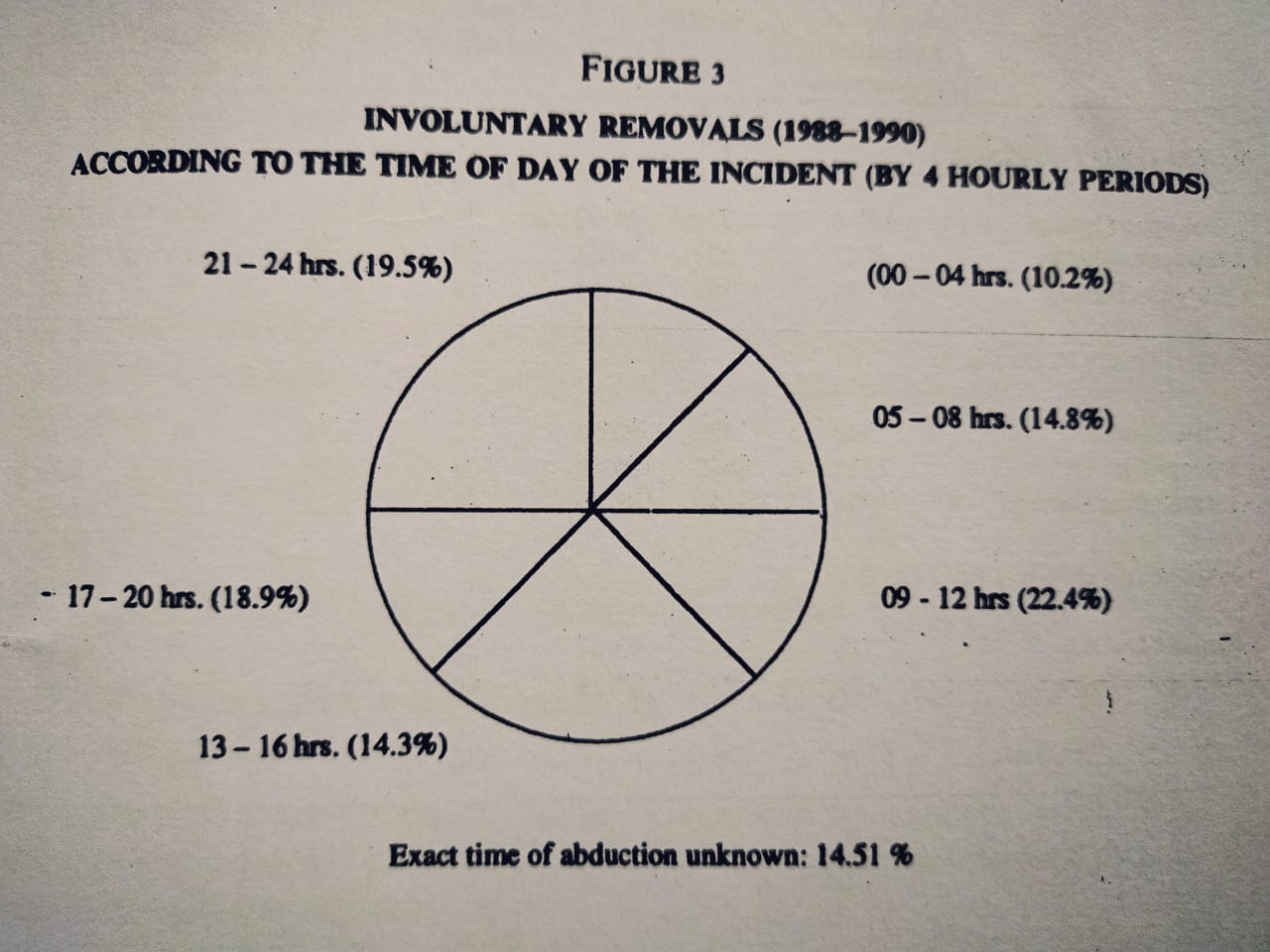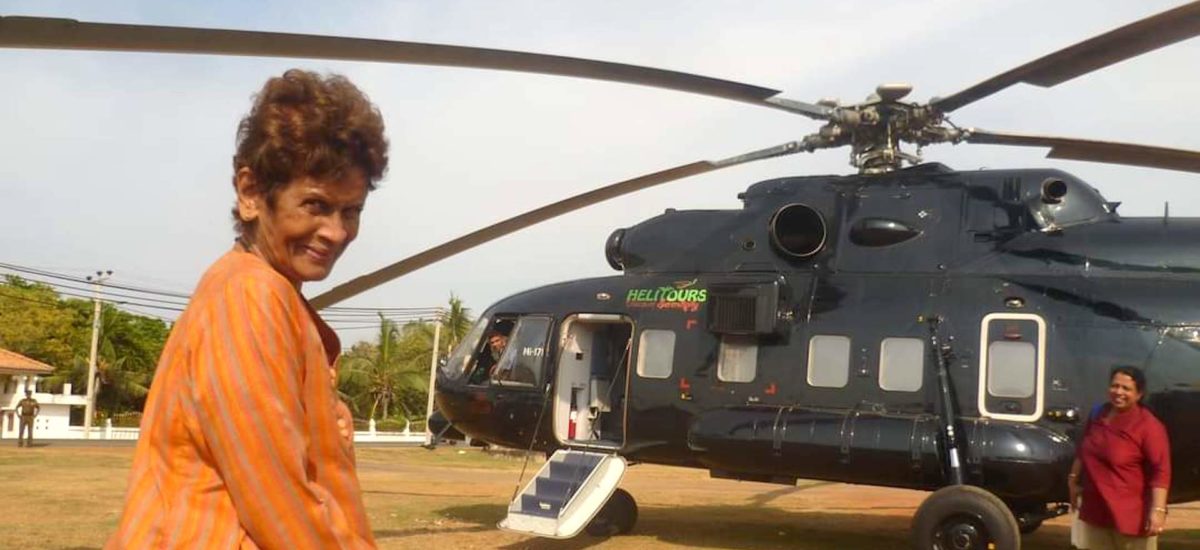Photo courtesy of Mirak Raheem
August 30 is marked across much of the world as the International Day of the Victims of Enforced Disappearances. For the families and the friends of the disappeared and human rights groups working on the issue in countries such as Sri Lanka, which have experienced large scale disappearances, it provides an opportunity to remind those respective societies and governments of their responsibilities to address the crime and its victims. While seeking state and public acknowledgement, it also provides a space for reflection, on how far (and how slowly) we have moved on issues of justice, truth, reparations, and to build resolve on pushing onward.
This year’s commemoration comes a month after the passing away of Manouri Muttetuwegama, who played a prominent role in the struggle for disappearances for at least three decades, both as a part of civil society and as a member of independent state mechanisms. A renowned Attorney-at-Law, Manouri served in key positions, including as chair of the All-Island Commission on Disappearances, commissioner of the Human Rights Commission and chairperson of the Consultation Task Force for Reconciliation Mechanisms, helping advance the cause of justice and human rights. To me she was a senior activist, wise counsel, fellow comrade in the struggle for human rights and a friend. In this piece, I want to focus on something that she shaped and invested herself in, and that also marked a milestone in the struggle for disappearances – the Final Report of the Commission of Inquiry into Involuntary Removal or Disappearance of Persons in the Western, Southern and Sabaragamuwa Provinces (Final Report). The lines of reasoning, the framing of issues and the turn of phrase speak of Manouri’s commitment, determination and above all empathy to this issue. Although 24 years has passed, the Final Report remains so relevant.
Milestone in the struggle for disappearances
For a country that is addicted to commissions, a Commission of Inquiry (COI) as a milestone may seem a misplaced notion. Sri Lanka has had over a dozen temporary, ad hoc mechanisms with mandates to look at the issue of disappearances (either exclusively focused on the issue or as part of wider human rights). These COIs and special committees were broadly meant to examine the problem and provide recommendations, but too often served as smoke screens. Sets of personalities of some standing were appointed to carry out inquiries and serve as proof that the state was doing something. The reports or recommendations in such cases were not always made public or acted upon in any comprehensive manner. When the appointed individuals were persons of integrity and determined to fulfil their duty to the public, however these reports could prove potent. Such a report could provide a mirror to confront the state, force a conversation on tough issues, and to precipitate a process of acknowledgement.
Assessing the impact of such commissions can be difficult because it is not merely evaluating the process and the report for its comprehensiveness, credibility, accuracy and effectiveness, but how it is received in a political environment and acted upon. In examining the impact of the Final Report, it has to be looked at alongside its two other sister commissions, together referred to as the Zonal Commissions, and the All Island Commission that immediately followed. In terms of the history of the struggle on disappearances, these four commissions, stand out as a moment when the State was forced to acknowledge the crime of disappearances and provide some redress, particularly on reparations, including the provision of compensation and death certificates for the victims. The search for the disappeared and the prosecution of perpetrators, however, was largely restricted to a handful of high-profile cases. The political will to bring about more systemic reforms and to investigate and prosecute such cases rapidly waned and Sri Lanka faced yet another cycle of disappearances in the context of the civil war. Families of the disappeared will judge these COIs harshly as they expected them to provide answers to the fate of their loved ones, and are not satisfied by recommendations, as opposed to actions.
Confronting the State
The recommendations of the Final Report provided a critical starting point for laying out the responsibilities and obligations of the State to respond to the disappearance question. At a time when transitional justice was at a nascent stage with South Africa’s Truth and Reconciliation Commission in session, the Report provided a basic framework for Sri Lanka to think through issues of justice, reparations and non-recurrence. It highlighted the importance of counselling and community approaches among its relief measures, some of which the Government instituted, such as a compensation programme. It listed out a series of preventive measures, including ending the practice of unauthorized places of detention and reforming the Emergency Regulations, which if instituted could have limited the space for the continuation of enforced disappearances in the next decades. These recommendations would be reiterated by local civil society actors and by the UN Working Group on Enforced Disappearances, and also the Office on Missing Persons. While the recommendations are ambitious, they were also rooted in ground realities. For instance, the Report recommends the establishment of a Human Identification Centre to assist in dealing with mass graves, while cautioning the State against excavating until the required expertise is built up.
The Final Report confronted the State with irrefutable evidence that Sri Lanka had experienced mass disappearances. While courts establish legal facts, COIs can provide political facts based on law. Previous COIs appointed during the tenure of Presidents R. Premadasa and D.B. Wijetunga, which were supposed to look at the issue of disappearances proved unable to overcome challenges such as limitations in mandate, lack of will and the political context. It was with the COIs established under President Chandrika Bandaranaike Kumaratunga that the debate transformed, with the State being forced to confront itself. The responsibility for bringing about this moment has to lie with the families of the disappeared and the organisations working on this issue, especially the Mother’s Front with opposition politicians.
The foundation for the Final Report lay in the solid process followed by the COI to assess facts of the disappearance. For a start, the sittings provided an official forum for victims to be heard, which was especially significant given the context of denial, hostility and violence faced by those who had attempted to speak out. After calling for complaints and reaching out to a broad range of actors (sending out up to 16,800 complaint forms) 8,739 cases. The COI held inquiries through sittings in the three provinces into a majority of cases (7,761), following which the COI sifted out those who fell outside the mandate (including outside the time bar, or who had gone missing due to personal disputes), based on witness statements and official documentation. A total of 7,238 cases of involuntary disappearances were established by the COI and were listed out in Volume 2. This list not only conveys the sheer scale of the problem and acknowledges the individuals who were disappeared, but continues to be relevant in the efforts to build a centralized list of all the disappeared in Sri Lanka.
The Final Report established an official narrative of the disappearances and makes for grim reading: 68 or 0.77% were children below the age of 15; 1.12% were 98 Buddhist priests; Matara District contributed to the largest number of disappearances (27.13%) of the eight districts; the busiest time of day for disappearances was 9 am to 12 pm. Often borrowing phrases from victims and of the time, the narrative effectively conveyed the terror and helplessness that they experienced: “During the sittings of this commission, we repeatedly heard the saying, “when we went to the police station, we were chased away like dogs’” (p.XV). In talking about the overall scenario in the South as the State forces fought the JVP the position of civilians was described as “giriyata aju vechcha puwak gediya wage” (p.160) – like the arecanut caught in the nut cutter. Symbolically the Report speaks of ‘disappearances,’ as opposed to using the more ambiguous term of ‘missing,’ which acknowledged intentionality and was in keeping with development in international human rights law.

In order to make its case the Final Report provided the details of a series of individual cases to prove its assertion, simultaneously capturing some of the countless tragedies that unfolded across the country. On the threats faced by lawyers and petitioners who filed cases on disappearances, it lists out the testimonies of different families who had family members or their lawyer subjected to threats, intimidation, or even killed or disappeared. In one instance, the father had filed a Habeas Corpus Application for his son who was abducted and went to court to give evidence, but he too disappeared, forcing the surviving family members to withdraw the case for fear of their lives (p.107).
Faced with a State machinery that not only rejected its involvement in carrying out disappearances but that the disappearances even took place, the Final Report, through the testimonies and its investigations, was able to repudiate the denials. “A feature that struck us most forcefully in our inquiries was the utmost care that had been taken not only by individual perpetrators but also by the system itself to prevent those occurrences from being reflected in the official records of the country” (p.XV). For instance, state officials sought to refute the existence of secret and unofficial detention centres, such as the Sevana Army Camp where the disappeared Embilipitiya School Boys were believed to have been kept. The COI was able to locate the food register providing valuable evidence to prove the presence of detainees (p.56). The Final Report built a strong case to prove the systemic nature of disappearances and culpability of the State, using 9,744 witness testimonies, including that of abductees who were released and senior military and police personnel (pp.34-5). For instance, the Report highlighted the practice of persons surrendering to the Government Agent, who in turn would hand them over to rehabilitation camps, but that some of these surrendees disappeared in the system (p.27).
The Report dedicated a chapter to the culture of impunity that enabled disappearances, listing out key features – “the sight of scavenging dogs feeding on mutilated bodies left in piles on the road side”; tyre pyres and necklaces of burning tyres, the complaints of disappearances that if accepted would omit critical details; and “the knowledge, worst of all, shared by the whole community, that there would be no official acknowledgement, not noe [sic] perpetrator punished, even though these were not the acts of a foreign invader” (p.51).
The Report pursued a critical line on accountability, highlighting the culpability of State agents. Of the 7,239 cases of proven disappearance, 4,858 were carried out in collaboration with the state and para military groups working in collaboration, while 59 cases were by personal enemies acting in collaboration with agents of the state; only 1,543 were by perpetrators unknown (p.29). The Report went on to highlight the failure to prosecute despite a “clear chain of evidence” (p.54). Following its mandate to unearth “any credible material indicative of the person or persons responsible” for disappearances and in response it submitted a list of names of persons confidentially to the President where there was prima facie evidence (p.67). The Report also confronts the JVP with its culpability in 779 disappearances (p.29), stating that it was not simply an effort to overthrow the state but also stifle any opposition to it (p.44), punishing not just individuals but his/her family in a brutal manner (p.45-6). The Final Report thus provides an official account of a dark and tragic moment in this country’s history.
From denial to duty?
In successive decades, other COIs were established, including the Lessons Learned and Reconciliation Commission (LLRC) and the Paranagama Commission, which examined the issue of disappearances and made recommendations in this regard. While they fell short of the benchmarks set by the Final Report, nonetheless they provided official documentation of disappearances, including those that took place during the last years of the war. It would be more than two and half decades after the Final Report that there would another major milestone with the establishment of the Office on Missing Persons in 2018 – a permanent and independent state mechanism with the primary responsibility of conducting the search for the many thousands of disappeared and missing. This signalled the state’s recognition of its obligations to the disappeared. This is part of a necessary shift from disappearances being an issue that is addressed at the whim of political regimes to a permanent state responsibility. The passage of the International Convention for the Protection of All Persons from Enforced Disappearances Act in the same year marked a symbolic moment in explicitly recognizing the crime of disappearances. In pushing through both reforms, which came on the back of the UN Human Rights Council Resolution 30/1, the late Mangala Samaraweera played a significant role and was an ally in furthering the cause of disappearances over the decades, including with the Mother’s Front.
Looking at where the issue of disappearance stands today, it appears that there has been a significant advancement in law and institutionalization, yet the space and the will to carry out truth seeking, and the search and to pursue justice seem remote. In a context where denial of disappearances has regained political currency, the reports from many of these commissions, including the LLRC and Paranagama, can play an important role to thwart the shifting of goal posts to false debates and tropes, by once more reminding the State and political society that disappearances are part of the official narrative and that the State has duties and obligations to the citizens of this country, especially the victims who have been disappeared.


